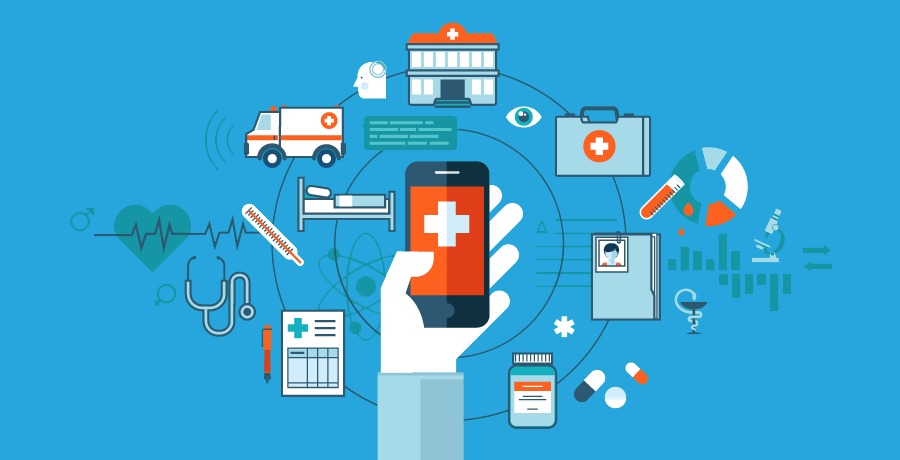The Covid-19 pandemic has placed unprecedented demands on the healthcare sector ecosystem in india, but what has also emerged is the accelerated digital transformation of the industry. This has fast-tracked the adoption of digital health in India, including telemedicine consultations. Data from the government-owned e-Sanjeevani portal shows more than five million Indians benefitted from teleconsultations since April 2020.
As a global healthcare leader, we have observed changed consumer behaviour and a rise in digitalization, accelerated by the current pandemic. Digital health can revolutionise the patient’s experience and bridge gaps in access by providing a holistic and personalised approach to delivering care, regardless of location. This vision rests on establishing a unified, data-driven and pan-India health system. Such a system will help India achieve a true continuum of care and enhance treatment outcomes. Efforts to build this system must be guided by certain organising principles, as well as key policies and laws that ensure a favourable environment to foster further digital growth.
Unified systems to scale access
Digital health platforms can improve accessibility and availability of quality care, while minimising costs – both for people paying for their treatment and consultations out-of-pocket, but also for the healthcare system overall. In the current pandemic environment and healthcare scenario, these platforms have also solved challenges and overcome limitations faced by vulnerable populations in traveling to healthcare facilities due to infection risk, or inaccessibility of clinics and doctors. It is necessary to establish standards for a unified digital health system in order to scale access to healthcare services across India.
Integration and standardisation
Standardised formats can simplify access to data across the public and private sectors, including primary healthcare clinics, diagnostic centres or specialty hospitals. With suitable data protocols and standardised formats, Electronic Health Records (EHRs) can be migrated across various health touchpoints, ensuring doctors can provide a seamless care experience for patients.
Since digital adoption is still at a nascent stage in India, the penetration of standardised EHRs can be achieved from the outset, without having to navigate multiple legacy systems. The integration of data for a population as large as ours into a unified system will also help build a significant data volume advantage for India, 2 which can generate insights into disease and lifestyle patterns and help researchers develop new models of personalized care. The move towards standards-based digital systems via the National Digital Health Mission will be a significant step forward in this direction.
Enabling private app ecosystems
India’s existing health infrastructure is built on the strengths of both the public and private sectors. This partnership needs to further extend into the digital landscape. Private health apps and digital services have a critical role to play in bridging gaps and addressing specific patient needs.
Integrating private app ecosystems into the larger national digital health structure will allow the sharing of anonymized data, subject to individual consent. Such data can be a source of insights for targeted policy interventions. This can drive customized innovations to address specific national, state and district-level needs.
Ensuring robust data protection
As with any digitalization drive, individual and patient data protection must be secured, with clarity on how data must be created, stored, and protected. India needs to establish a robust ecosystem that will protect patient data and privacy.
Supporting skill building for digitalization
The advent of a new digital era for healthcare calls for investments in technology assets and development of expertise. One critical step is to launch training initiatives for frontline health workers and other healthcare professionals on managing patients with the support of digital technology, such as with electronic records. Beyond managing electronic records, it will be important to provide training in capturing relevant data digitally, in an accurate and real-time manner.
In addition to building familiarity with tools, health workers require effective patient consultation techniques aligned with the formats of telemedicine and virtual consultations. Industry bodies such as physician associations have a pivotal role to play in facilitating this effort. The broader industry can also step in to share learnings and practices. For instance, the Association of Physicians of India, in collaboration with Abbott introduced recommendations and best practices for teleconsultations in specialties such as cardiology and diabetes. These recommendations provide therapy-specific steps to recognize symptoms and potential pathologies in order to diagnose patients remotely, while listing red flags to prompt timely intervention.
By adopting such verified guidance, doctors will be able to leverage teleconsultations and other digital solutions more effectively to drive greater access to quality care, now and in the future. Standardization, scale, security, skill building – keeping these parameters in mind will make the task of building India’s national digital health ecosystem a smoother and more effective endeavour. A robust ecosystem will enable patient-centric precision interventions to help us get ahead of disease and enable better outcomes.



